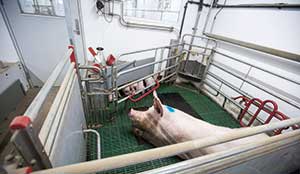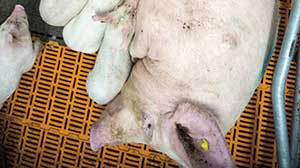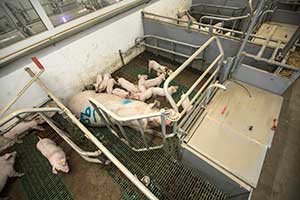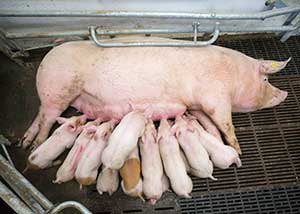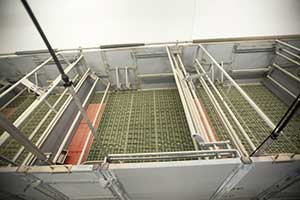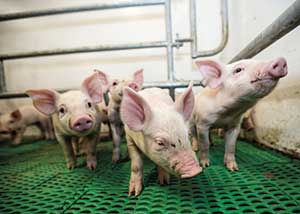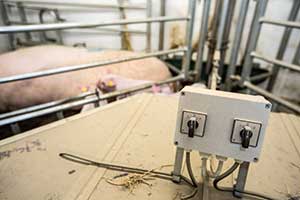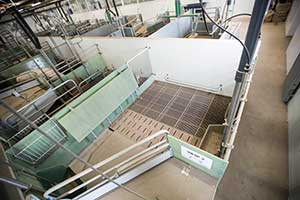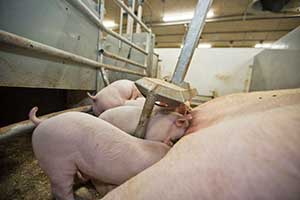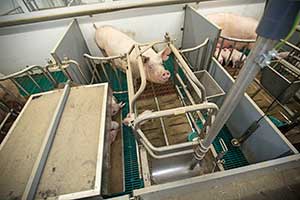10 Danish loose farrowing pens compared
Ten European loose-housed farrowing pens are being assessed for pig, piglet and worker welfare in a world-leading product test.
This follows industry targets for 10% of Danish sows to be housed in such systems by 2021.
More than 4,000 loose farrowing pens are in use in Denmark today, up from 300 pens in 2007.
The study, conducted by Seges Pig Research Centre, looked at between six and nine pens from each manufacturer depending on pen dimension.
See also: Farming pen could boost piglet and sow welfare
Trials targeted 10 production cycles from each single pen, with the Siljebjerggaard Svineproduktion team already about to start with the third batch of piglets.
Pens are located to optimise environment and temperature and fostering is allowed between pens of the same brand.
Seges test criteria
- Ease of entering and exiting for staff and sow
- Design and use of box
- Space for sow
- Design and use of sheltered piglet creep area
- Allocation of feed and water
- Ability to nest and root
- Pen hygiene
- Damage/sores on sow and piglets
- Employment conditions and staff safety
Comparison of the 10 loose farrowing pens on trial |
||
|
ACO Funki: Welsafe (Denmark)
|
|
|
|
Big Dutchman: Free move (Denmark)
|
|
|
|
Bopil: BeFree (Denmark)
|
|
|
|
Jyden: JLF 14 (Denmark)
|
|
|
|
Midland Pig: 360 Freedom Farrower (UK)
|
|
|
|
Vereijken Hooijer: Pro Dromi (Netherlands)
|
|
|
|
Vissing Agro: Opti Farrow (Denmark)
|
|
|
|
VSP/KU Swap Version (Denmark)
|
|
|
|
Søren Juul Jensen: Well-Fair-Pen (Denmark)
|
|
|
|
Stewa: WING (Austria)
|
|
|
Siljebjerggaard Farm, Brædstrup
Farm facts
- Gilts usually weight 220kg at first farrowing
- Five to six litters from each sow
- Mature pigs weigh 300-340kg
- Average birthweights of 1.2-1.4kg
- 11kg of piglet feed used a sow a year costing DKK55 (£6.65)
Large litters and low mortality are essential at Siljebjerggaard Svineproduktion, which is achieving 32-33 pigs a sow a year from its 1,000-head herd.
This is why optimising sow and staff comfort is key for Jacob Justesen and his father Svend. They market 7-8kg weanlings at 28-30 days old and use the Opti Farrow pen in their commercial unit.
Gestating sows are housed in farrowing pens five days before the farrowing date and are given straw for nesting before being restrained 24 hours pre-farrowing.
Each farrowing group consists of 84 sows, with farrowing two weeks apart and one in four farrowings one week apart, explains Jacob.
“About 80% of sows housed are expected to farrow the next day and these require straw for nesting by law,” says Jacob, who is keen to see the trial results to find out which farrowing pens come out on top.
“Here in Denmark straw for nesting means a big handful of straw once a day. That means when the farrowing is over there is almost no straw left in the pen. Compared with the UK we use small amounts of straw.”
Straw is removed and sows are released from restraints five days after farrowing and straw is placed in racks.
“The trial pens either have straw racks or a wooden stick to comply with rules requiring access to a manipulable material 100% of the time.”
The Justesens have found it difficult to prove that straw was available 24 hours a day and now provide sows with a stick in their commercial sheds.
Sow and staff welfare
In the commercial Opti Farrow pens the floors of 16 units contain plastic slats and eight have cast iron.
Four of the eight cast-iron floors are solid and 5% of the units comprise holes, explains Jacob.
“We have learned that sows have fewer sores on a cast-iron floor and they like it in summer as the metal is cooler. The piglets, on the other hand, benefit from warmer plastic slats.”
Critical to productivity and maintaining a low piglet mortality of 10% is a farrowing pen that allows staff to easily restrain the pig and assist in farrowing large litters.
“Easy and safe access for staff is very important, which is why we opted for the pens we use,” explains Jacob.
“Being able to assist in farrowing large litters of piglets is important in Denmark and in the pens we can use in our commercial farm we can assist from outside the pen.”
Growing piglets
A dry feed containing a protein blend and home-grown cereal (wheat/beans/barley plus soya/fish/potato protein at 20%) from their 360ha arable operation is fed to sucking piglets.
Day four sees piglets’ tails clipped and boars castrated, with vaccination usually administered two days before weaning at four weeks old. Teeth clipping is forbidden.
“If a piglet is below 1kg then this is small and about 15% of our piglets are small,” admits Jacob. “Despite the extra attention they still have a 50% higher mortality.”
Very small amounts of dry feed is offered from day 10-12 at three to four feeds/day. Ad lib feeding takes over around day 18-20.
Runts are collected after weaning and kept on a home grown cereal ration with 20% protein blend and 20% milk powder.
“By the limit of the weaning period if piglets aren’t near the 7-8kg mark we put usually 10% of piglets in a baby unit where we try and put up to 2kg of liveweight on them. We feed a wet mix of the feed to help aid feed intake.”

